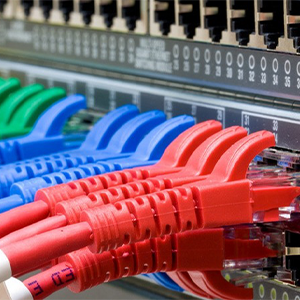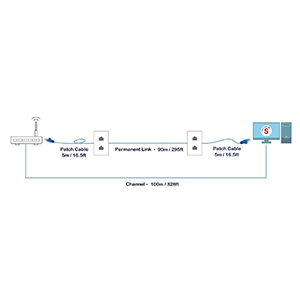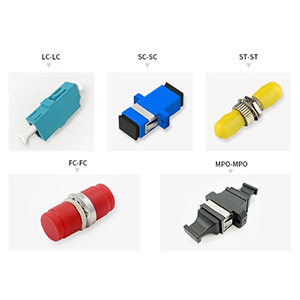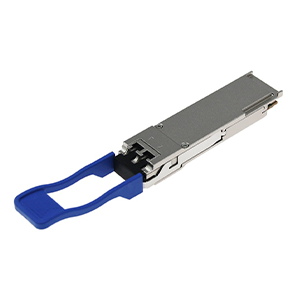Optical amplification technology plays an important role in optical communications. This article will explore the main limitations of Raman amplifiers. We will first explain the physical mechanism of Raman amplification and explain its advantages over other amplifiers. Next, we will deeply analyze the main limitations of Raman amplifiers, including signal gain characteristics, power consumption and heat dissipation issues, system noise factor, linearity and dynamic range, cost and reliability, as well as manufacturing and debugging difficulties. We will explain the impact of these limitations on Raman amplifiers in practical applications. Finally, we will introduce the key technologies to improve the performance of Raman amplification and explain the technical trends of future Raman amplifier development.
Basic principles and advantages of Raman amplification
Raman amplifiers are based on the principle of Raman scattering. By introducing strong laser pump light into the optical fiber, the Raman scattering effect is stimulated, thereby generating gain on the signal light. The signal light interacts with the pump light, the intensity of the signal light is enhanced, and the optical signal is amplified. This method can effectively reduce the attenuation of the optical signal and improve the transmission performance of long-distance communication.
Physical mechanism of Raman amplification:
- Raman amplification is based on the stimulated Raman scattering (SRS) effect generated by the interaction between light and medium molecules.
- When high-power pump light propagates in the optical fiber, it interacts with the optical fiber molecules, causing the molecules to vibrate and generate phonons (sound waves).
- These phonons then exchange energy with the weaker signal light, thereby amplifying the signal light. This is the basic principle of Raman amplification.
- In order to achieve the most efficient energy exchange, the wavelength of the pump light is usually shorter than the signal light by one Raman frequency shift.
Advantages of Raman amplification over other methods:
(1) Broadband characteristics:
- Raman amplification can operate in the C-band and L-band of the entire optical fiber communication, with a wide operating wavelength range.
- This allows Raman amplifiers to simultaneously amplify multiple wavelength-division multiplexed channels.
(2) Independence from fiber type:
- Raman amplification does not depend on the specific material and structure of the optical fiber and can be used for different types of optical fibers.
- This makes Raman amplifiers highly compatible and flexible.
(3) Low noise characteristics:
- When the signal power is low, the noise characteristics of Raman amplification are better than those of other amplifiers, such as EDFA.
- This makes Raman amplifiers more advantageous in some noise-sensitive applications.
(4) Distributed amplification characteristics:
- Raman amplification can achieve distributed amplification throughout the entire optical fiber, not just in a certain section.
- This can greatly reduce the loss in optical fiber transmission and improve the transmission performance of the system.
(5) Easy to achieve wavelength selectivity:
- By adjusting the wavelength of the pump light, selective amplification of different signal wavelengths can be achieved.
- This facilitates the application of wavelength division multiplexing technology.
In general, Raman amplification has broad application prospects in long-distance optical fiber communication systems due to its unique physical properties.
Main limitations of Raman amplifiers
The main limitations of Raman amplifiers include: high dependence on pump light sources, requiring high-power pump light to achieve effective gain; additional nonlinear effects may be introduced in long-distance transmission; and high equipment complexity and high cost. It has high requirements for fiber quality and system configuration, which may limit its popularity and use in some applications.
Signal gain characteristics:
- The signal gain characteristics of Raman amplification are affected by factors such as power distribution and fiber parameters, and are difficult to control accurately.
- The uncertainty of gain characteristics will affect applications, such as the difficulty in achieving gain flattening in wavelength division multiplexing systems.
Power consumption and heat dissipation issues:
- Raman amplifiers usually require high-power pump light sources, which consume a lot of electricity and lead to high power consumption.
- High-power pumping generates a lot of heat, requiring complex heat dissipation design, increasing system complexity and cost.
System noise factor:
- Raman amplification relies on the interaction between light and phonons, which introduces considerable noise.
- High noise factor limits the use of Raman amplification in some noise-sensitive applications, such as high-speed transmission.
Linearity and dynamic range:
- Raman amplification has certain nonlinearity and limited dynamic range, and cannot achieve completely linear amplification.
- These characteristics limit the application of Raman amplification in some applications that require high linearity and wide dynamic range.
Cost and reliability:
- Raman amplifiers are expensive to manufacture and require high-power pump sources and complex optical structures.
- The long-term reliability of Raman amplifiers needs to be further improved, which limits their use in some applications that require long life.
Manufacturing and debugging difficulties:
- The manufacturing process of Raman amplifiers is relatively complex, requiring fine control of fiber parameters, pump coupling, etc.
- The manufacturing and debugging process is relatively complex, which further increases the cost and application threshold of Raman amplifiers.
In short, although Raman amplification has many advantages, the above limitations still restrict its use in some application scenarios. In the future, Raman amplification technology needs to be further optimized to overcome these limitations and expand its application space.
Technical measures to overcome the limitations of Raman amplification
Technical measures to overcome the limitations of Raman amplifiers include: using high-efficiency pump light sources, such as high-power semiconductor lasers, to increase gain; optimizing fiber design to reduce nonlinear effects; introducing wavelength selective filtering technology to reduce noise; and combining other amplification technologies, such as erbium-doped fiber amplifiers, to improve the overall performance and cost-effectiveness of the system.
1. Key technologies to improve Raman amplification performance
1.1 Optimizing pump light sources
- High-power pump light sources: The use of high-power pump light sources can significantly improve the gain performance of Raman amplifiers. By increasing the power of the pump light, the degree of signal amplification can be increased to meet the needs of long-distance and high-power applications.
- Broad-spectrum pump light sources: In order to expand the gain bandwidth, a broadband pump light source can be used. These light sources can cover a wider wavelength range, thus achieving effective amplification of multi-wavelength signals, and are suitable for broadband signal processing in wavelength division multiplexing systems.
1.2 Improved gain medium
- New fiber materials: Research and development of new fiber materials, such as erbium-doped fiber and composite fiber with other doping substances, can improve the gain and performance of Raman amplifiers. These new materials can provide higher nonlinear coefficients and lower signal loss.
- Photonic crystal fiber: Photonic crystal fiber has the ability to adjust the propagation characteristics of light and can be used to improve the performance of Raman amplifiers. By optimizing the design of photonic crystal fiber, more efficient Raman scattering and stronger signal amplification can be achieved.
1.3 Reduce nonlinear effects
- Optimize fiber design: Using fiber design with optimized nonlinear characteristics can reduce the impact of nonlinear effects on signal quality. For example, by adjusting the structure and material of the fiber, the impact of nonlinear effects such as four-wave mixing can be reduced.
- Reduce pump power density: By reducing the power density of the pump light, the occurrence of nonlinear effects can be reduced. Reasonable control of pump power and avoidance of excessive power density can help reduce nonlinear distortion of the signal.
1.4 Realize automated and intelligent control
- Adaptive gain adjustment: The introduction of adaptive gain adjustment technology can automatically adjust the gain of the amplifier according to the real-time signal strength and transmission conditions. This technology can improve the adaptability and performance of the amplifier in different network environments.
- Intelligent Monitoring System: Use the intelligent monitoring system to monitor the operating status and signal quality of the Raman amplifier in real time, and automatically adjust and optimize parameters. This helps maintain the stability of the system and improve overall performance.
2. Technology Trends in Future Raman Amplifier Development
2.1 High Power and Wide Bandwidth Technology
- Extremely High Power Output: Future Raman amplifiers will continue to promote the development of high power output to meet application scenarios with higher power requirements. By optimizing the pump light source and gain medium, Raman amplifiers will be able to provide higher power levels.
- Wide Bandwidth Gain: The gain bandwidth of Raman amplifiers will be further expanded to support a wider spectral range. Wide-bandwidth amplifiers will be suitable for higher-density wavelength division multiplexing systems and broadband communication applications.
2.2 Integration and miniaturization
- Integrated optical chips: Integrated optical chip technology will become an important direction for the development of Raman amplifiers. These chips integrate amplifier functions into a single photonic integrated circuit, reducing the size and cost, while improving the integration and reliability of the system.
- Miniaturized fiber optic devices: Miniaturized fiber optic devices will further enhance the application flexibility and portability of Raman amplifiers. Miniature fiber optic devices are suitable for high-density integrated systems and miniaturized applications, expanding the application scenarios of amplifiers.
2.3 Intelligent and adaptive technology
- Intelligent control system: Future Raman amplifiers will have a more intelligent control system that can adjust the operating parameters of the amplifier in real time to optimize performance. This includes automatic adjustment of gain, pump power and other key parameters.
- Adaptive gain adjustment: Adaptive gain adjustment technology will enable Raman amplifiers to automatically optimize gain according to network status and signal conditions, improving system adaptability and efficiency.
2.4 New Materials and Technologies
- New Gain Media: Researchers will continue to explore new gain media, such as doped nanomaterials and new fiber materials, to improve the performance of Raman amplifiers. These new materials may bring higher gain, lower noise and wider gain bandwidth.
- Photonic Crystal Fiber: The application of photonic crystal fiber will become an important direction in future Raman amplifiers. Its unique optical properties enable it to provide efficient Raman scattering, improving the performance and stability of the amplifier.
2.5 Green and Energy-saving Technology
- Energy-saving Design: Future Raman amplifiers will focus on energy-saving design and reduce energy consumption. By optimizing the pump light source and improving system efficiency, the energy consumption of the amplifier can be reduced, which meets the requirements of environmental protection and energy saving.
- Green Fiber Materials: The development of environmentally friendly fiber materials and low-energy manufacturing processes will become the trend of future Raman amplifier development. This will help reduce the environmental impact during production and operation.
In general, Raman amplifiers will continue to develop in technological innovation and future applications to meet the growing communication needs. These technological trends will promote the widespread application and performance improvement of Raman amplifiers in communication networks.
Summary
Although Raman amplifiers have many advantages in optical communications, they also have some limitations. Our company has long been focusing on the research and development and application of Raman amplification technology, and constantly exploring ways to overcomeinnovative solutions to these limitations. We provide various high-performance Raman amplifier products, which have been widely used in long-distance optical fiber communications, metro networks, data center interconnection and other fields.
Our Raman amplifier adopts advanced manufacturing processes and has achieved significant improvements in improving signal gain, reducing power consumption, suppressing noise, and improving linearity. At the same time, our team of engineers will provide you with professional system integration services to ensure that the Raman amplifier achieves its best performance in practical applications. Contact us today to learn more. We will go all out to provide you with the best quality products and solutions.
Raman Amplifier FAQ
Common pump lasers for Raman amplifiers include high-power diode lasers and fiber lasers, typically operating at wavelengths around 1450 nm to 1480 nm.
The Raman gain spectrum is broadband and can be tailored by adjusting the pump wavelength and power, allowing the amplifier to boost signals over a wide range of wavelengths.
WDMs are used to combine the pump laser wavelengths with the signal wavelengths, ensuring efficient coupling and amplification within the optical fiber.
Raman amplifiers are primarily used for single-mode fibers, but they can also be adapted for use in multi-mode fibers, though with different performance characteristics.
Raman amplifiers can be distributed along the fiber link, which helps in maintaining signal strength over long distances and reduces the need for intermediate repeater stations.
Pump lasers in Raman amplifiers typically require high power levels, ranging from hundreds of milliwatts to several watts, depending on the desired amplification and fiber length.
Raman amplifiers can be affected by polarization-dependent gain. Proper design and polarization management techniques are used to mitigate these effects and ensure consistent amplification.
High-power pump lasers used in Raman amplifiers pose safety risks, including eye and skin hazards. Proper safety measures, such as using protective equipment and following laser safety protocols, are essential.
Temperature variations can influence the Raman gain and the stability of the pump lasers. Advanced Raman amplifier designs include temperature compensation mechanisms to maintain consistent performance.
Future trends include the development of more efficient pump sources, integration with other optical components, advancements in fiber technology, and the expansion of Raman amplification applications in various fields.






